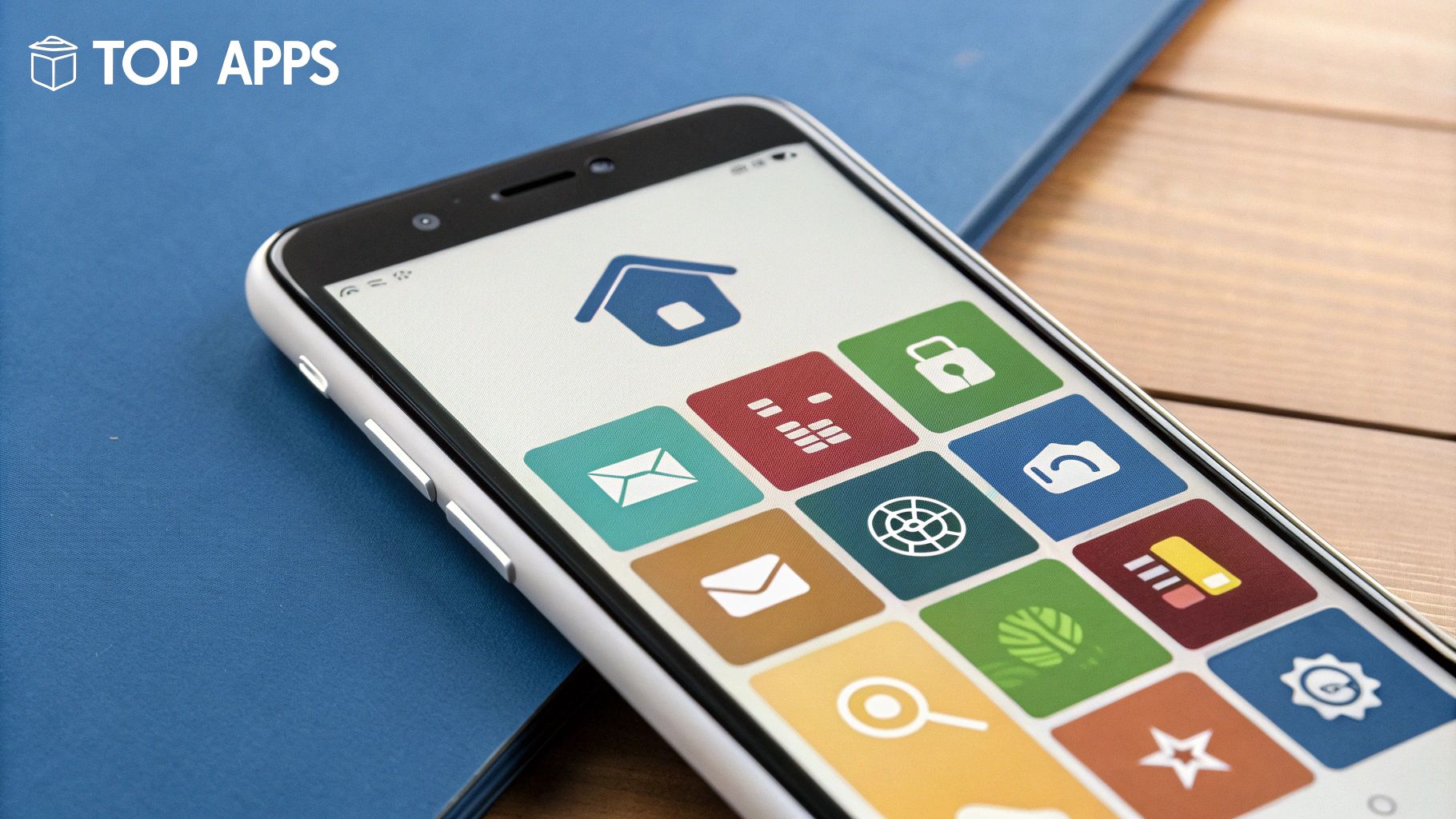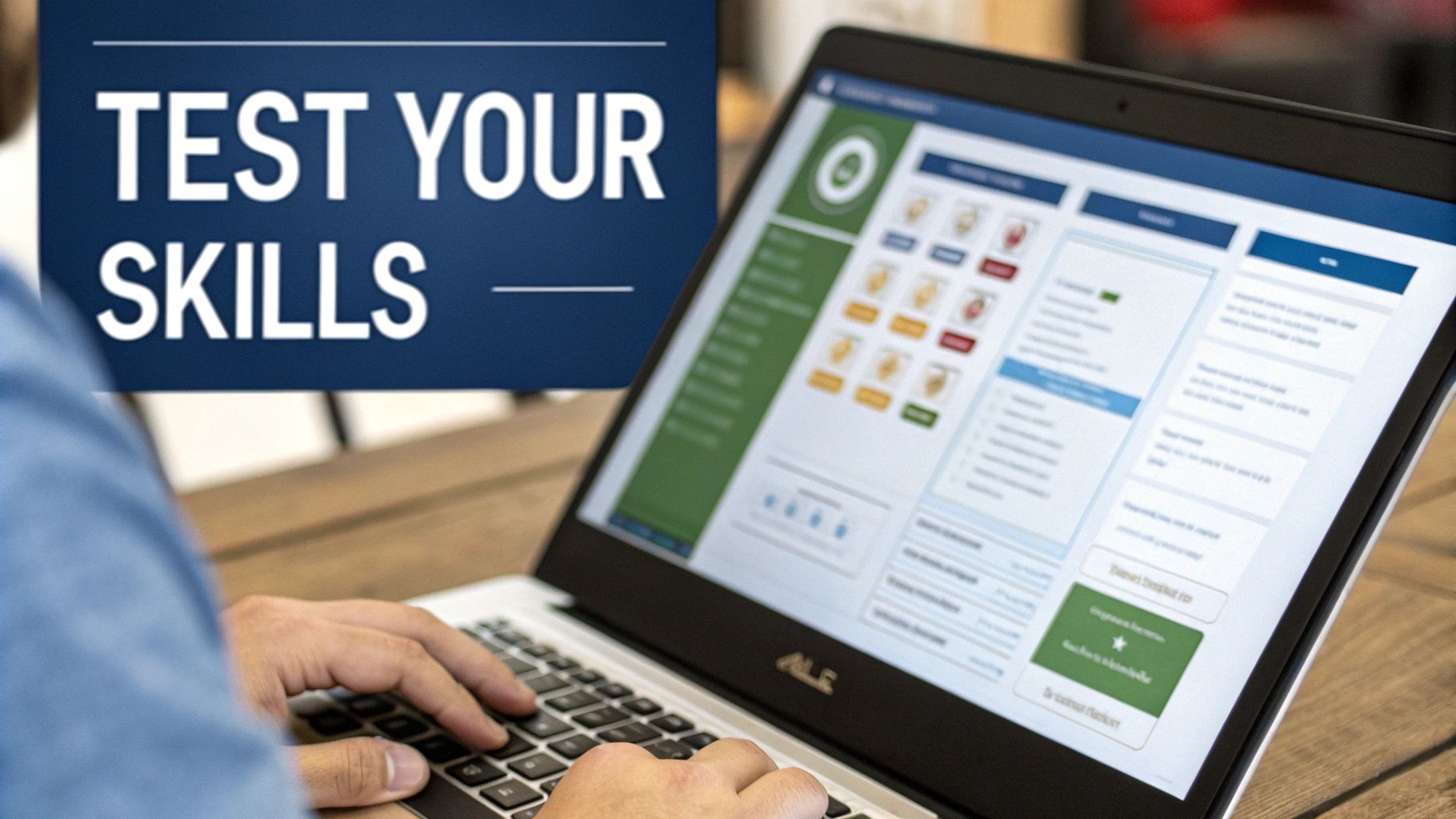10 Best Language Learning Apps: The Complete Guide for Serious Learners
The Evolution of Digital Language Learning

Language learning has come a long way from traditional textbooks and classroom settings. Modern language learning apps have made it possible to master new languages right from our phones and computers. This shift isn't just about convenience – it represents a fundamental change in how we approach language acquisition. The numbers tell the story: language learning apps generated over $1.08 billion in revenue in 2023, showing a notable 28% increase from the previous year.
The Rise of Mobile Learning and Personalized Experiences
The success of language learning apps stems from their ability to fit into our daily lives. Users can practice during their commute, lunch break, or whenever they have a few spare minutes. What makes these apps particularly effective is how they adapt to each person's needs. Rather than following a fixed curriculum, learners can move at their own pace and focus on areas where they need the most practice. This individual approach helps people stay motivated and actually remember what they learn.
The Science Behind Effective Digital Language Learning
Research backs up the effectiveness of well-designed language learning apps. Many top apps use proven techniques like spaced repetition, which helps cement new vocabulary and grammar patterns in memory through carefully timed review sessions. But good language learning goes beyond just memorizing words. The most successful apps combine different learning methods – from interactive exercises to real conversations with native speakers or AI chat partners. This mix of approaches helps learners develop natural language skills, much like how children learn their first language.
From Gamification to Real-World Application
Many language learning apps make studying feel like playing a game, with points, rewards, and friendly competition among users. While this approach works well, especially for younger learners who enjoy structured goals, it's important that the fun elements don't overshadow actual learning. The best apps strike the right balance – they keep users engaged while ensuring they develop practical language skills. This often means including real-life scenarios in lessons and giving learners chances to practice with actual conversations. By focusing on practical skills alongside engaging features, these apps help users build confidence in using their new language in real situations.
Finding Your Perfect Language Learning Match
These days, anyone interested in learning a new language faces an abundance of app choices. While having many options is great, it can also make selecting the right app feel like finding a needle in a haystack. The truth is, there's no universal "best" app since every learner has unique needs and preferences. Finding an app that works for you means taking time to evaluate your personal learning style, objectives, and study habits.
Matching Your Learning Style
Different apps shine in different ways when it comes to teaching methods. If you're someone who learns best through visuals, you'll want to look for apps featuring colorful graphics, interactive games, and image-based learning. Duolingo demonstrates this well with its bright, engaging interface that pairs pictures with new vocabulary words. On the flip side, if you absorb information better through listening, apps like Pimsleur that focus on pronunciation drills and spoken dialogues might be your best bet. For those who prefer structured learning with clear grammar explanations, look for apps that break down language rules step-by-step. Many top apps combine multiple teaching approaches so you can mix and match what works for you.
Aligning With Your Goals
Your reasons for learning a language should guide which app you choose. Planning a vacation? An app focused on basic conversational phrases and travel vocabulary might be perfect. Need language skills for work? You'll want something more comprehensive that covers business terminology and formal communication. Some people find that using multiple apps works best – for example, one for building vocabulary and another for mastering pronunciation. The key is picking tools that directly support what you want to accomplish.
Assessing Your Learning Approach
Think about how you've successfully learned other things in the past. Do you prefer diving in with hands-on practice, or do you like having clear structure and guidance? Your past learning experiences offer clues about what might work best for language study. Also consider practical factors like your schedule – how much time can you actually commit each day? Many popular apps now offer quick 5-15 minute lessons that fit easily into busy days.
Choosing the Right App for You
The best app is one that keeps you coming back to practice consistently. Take advantage of free trials and basic versions to test drive different options before committing to a paid subscription. Don't be afraid to try several apps until you find one that clicks with your learning style and keeps you motivated. With the right app as your learning companion, studying a new language can become an enjoyable daily habit rather than a chore. Remember, the goal is finding tools that work for you personally, not what works for everyone else.
Breaking Down the Top Language Learning Apps
Finding the right language app can make or break your learning journey. The market is bigger than ever – hitting $1.08 billion in 2023 with 28% yearly growth. But with so many options, how do you pick what works best? Let's examine how different apps stack up when it comes to the four key language skills: speaking, listening, reading and writing.
Core Language Skill Development: A Comparative Look
Each app has its own focus areas and teaching methods. Understanding these differences helps match apps to your specific goals and learning style.
- Speaking: Langua provides realistic conversation practice through AI chat partners, helping build confidence through immediate feedback. Pimsleur takes a different route with carefully structured speaking drills focused on proper pronunciation.
- Listening: Finnish Me features recordings of native speakers having natural conversations, helping learners grasp real-world speech patterns. LingQ lets you practice with content you choose yourself, from podcasts to YouTube videos.
- Reading: LingQ stands out by letting you learn from actual books and articles, building vocabulary through real context. Duolingo uses bite-sized stories and exercises, which many find more approachable.
- Writing: While most apps focus on other skills, HelloTalk enables writing practice through direct exchanges with native speakers. However, if you want focused writing instruction, you may need additional resources beyond language apps.
This table compares how different apps perform across these core skills:
| App | Speaking | Listening | Reading | Writing |
|---|---|---|---|---|
| Duolingo | Fair | Good | Good | Basic |
| Pimsleur | Good | Good | Fair | Basic |
| LingQ | Fair | Excellent | Excellent | Fair |
| Langua | Excellent | Good | Fair | Fair |
| Finnish Me | Fair | Excellent | Good | Fair |
| HelloTalk | Good | Good | Fair | Good |
Maximizing App Effectiveness: Strategies for Success
Picking an app is just the start. To really make progress, you need a smart approach to using these tools.
- Mix and Match Apps: Many successful learners use multiple apps together. For example, you might use Duolingo for daily vocabulary practice, Pimsleur for speaking skills, and HelloTalk to chat with native speakers. This way, you get the best of each app.
- Set Clear Goals: Be specific about what you want to achieve and stick to a regular schedule. Quick daily practice beats long, random study sessions. Think about how you learn best – do you prefer games and points, or structured lessons? Choose apps that match your style.
- Go Beyond Apps: While apps are great tools, they work best as part of a bigger learning plan. Try reading books, watching shows, listening to music, or talking with native speakers. These real-world activities help cement what you learn in the apps.
For instance, if you want to get better at conversation, you could start with Langua's AI practice, then move to real chats on HelloTalk. Add in some podcasts or movies in your target language, and you're building skills from multiple angles. This kind of well-rounded approach, focused on your personal goals, often leads to better results than relying on any single app.
Maximizing Your Learning Investment
Selecting a quality language learning app is just the beginning. The real work comes in using these tools effectively to reach your language goals. This section explores practical ways to get the most value from language apps by building good habits, combining different resources, pushing through challenges, and measuring real progress in your skills.
Creating a Sustainable Learning Routine
Just like exercising regularly builds physical strength, practicing a language consistently develops your communication abilities. The key is making language learning fit naturally into your daily schedule. Start small with 15-20 minutes of focused practice, then slowly increase the time as it becomes a habit. You might listen to lessons during your morning commute or review vocabulary while eating lunch.
Pay attention to when you learn best. Some people focus better early in the day, while others retain more in the evening. Plan your study time around these natural energy peaks. By working with your body's rhythms instead of against them, you'll learn more efficiently and stick with it longer.
Combining Resources Effectively
Most language apps have specific strengths – one may excel at teaching vocabulary while another focuses on speaking practice. Using multiple tools together creates a complete learning experience. For example, you could use Duolingo for foundational lessons, Pimsleur to work on pronunciation, and HelloTalk to chat with native speakers. This mix-and-match approach lets you target different skills while keeping learning fresh and engaging.
Overcoming Learning Plateaus
Every language learner hits points where progress feels slow or stuck. While frustrating, these plateaus are completely normal. The important thing is identifying what's holding you back. Maybe you're struggling with specific grammar rules or need to expand vocabulary in certain topics. Once you spot the issue, you can adjust your approach – finding new study materials, practicing weak areas more intensively, or taking a short break to recharge. Small, consistent efforts combined with smart strategy shifts will help you push through these challenging periods.
Measuring Real-World Competency
While earning points and completing lessons feels good, the true measure of success is how well you can use the language in real situations. Test your skills regularly outside the app environment. Watch shows in your target language, follow podcasts, or practice simple conversations with native speakers. These real-world interactions show you exactly where you need to improve. Regular practice in authentic settings ensures the time you spend with language apps translates into actual communication ability – which is the whole point of learning a new language.
Premium Features Worth Your Investment
Learning a new language often begins with free apps that teach basic vocabulary, grammar, and pronunciation. While these apps can help you get started, their free versions usually come with certain limits. Let's explore what makes premium language learning features valuable and how to decide if they're worth the cost for your goals.
Unlocking Advanced Learning Tools
The best language learning apps typically offer premium tools that take your learning to the next level. They often include personalized study plans that adapt to how well you grasp different concepts. You also get more variety in exercises and learning materials – similar to moving from a basic phrase book to taking an in-depth language course. This expanded content helps reinforce what you learn through different approaches.
Diving Deeper With Immersive Experiences
Premium features excel at providing real-world practice opportunities. You can join live conversations with native speakers, work through interactive scenarios, or focus on specialized vocabulary for work or travel. For example, you might practice ordering a meal through realistic restaurant simulations – something typically only available to premium users. These hands-on experiences help bridge classroom learning and actual conversations.
A Cost-Benefit Analysis: Is it Worth the Price?
Before upgrading to premium, think carefully about your language goals and budget. If you just want to learn travel basics, free app features combined with other no-cost resources may be enough. But if you're committed to becoming fluent, premium tools could speed up your progress. Like joining a gym, the cost makes sense if you'll actually use what you're paying for regularly.
Combining Free and Paid Resources Strategically
Many successful language learners mix free and paid tools effectively. They might use Duolingo for daily vocabulary practice while using Babbel or Rosetta Stone premium features for deeper grammar study and speaking practice. This combined approach lets you benefit from different learning styles while staying within your budget – like creating a balanced meal plan using various ingredients.
Choosing the Right Premium Plan for You
Language apps typically offer different subscription options, from monthly to yearly plans. Monthly subscriptions provide more flexibility, while annual plans often cost less per month for regular users. Compare the specific features in each tier carefully – don't just pick the cheapest option. Make sure the plan includes the exact tools you need for your learning style and goals. With the right premium features and consistent practice, you can make steady progress toward speaking your new language confidently.
The Future of Digital Language Learning
Language learning apps have seen remarkable growth, with the market reaching $1.08 billion in 2023 and growing 28% from the previous year. As these apps continue to develop, they're introducing new ways to help people master foreign languages. Let's look at what's coming next in the world of digital language learning.
Artificial Intelligence: A Personalized Learning Companion
AI is changing how we learn languages by making the experience more personal. Modern apps can spot what you're good at and where you need help – like tricky grammar rules or pronunciation challenges. Based on this analysis, they create practice exercises just for you. For instance, if you keep mixing up verb tenses, the app will give you extra practice with those specific patterns until you master them.
Machine Learning: Adapting to Your Unique Style
Apps are getting smarter about how you learn best. They watch how you interact with lessons and exercises, then adjust their teaching approach to match your style. If you learn better with visual aids, they'll show more images. If you respond well to audio lessons, they'll emphasize listening exercises. This constant fine-tuning helps you learn faster and remember more.
Immersive Technologies: Bringing Languages to Life
Virtual and augmented reality are making language practice feel more real than ever. Picture yourself ordering coffee in Spanish at a virtual café, or pointing your phone at street signs to see instant translations. These hands-on experiences help bridge the gap between textbook knowledge and real-world communication, making it easier to build practical language skills.
The Role of Human Interaction
While apps are fantastic learning tools, they work best when combined with real conversations. Successful language learners use apps alongside other methods – chatting with native speakers, reading books or news articles, and exploring the culture of their target language. This mix of digital practice and genuine human interaction creates the most effective path to fluency.
Staying Ahead of the Curve
To make the most of these learning tools, try different apps and features as they come out. Keep an open mind about new learning methods, and mix various approaches into your study routine. The most successful language learners are those who combine different tools and techniques to create a learning strategy that works for them.
Are you ready to experience the future of web development and digital marketing? DebugBar.com offers insightful articles, software reviews, and practical guides to help you stay current with technology trends. Visit DebugBar.com today and discover new ways to grow your skills.



Comments
Leave a comment